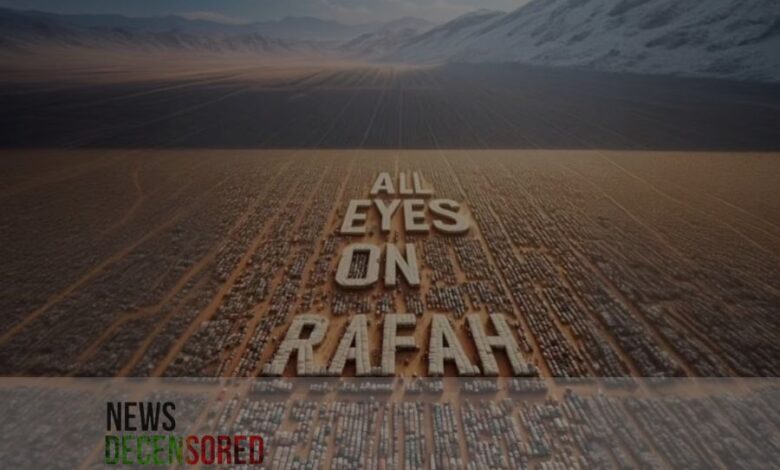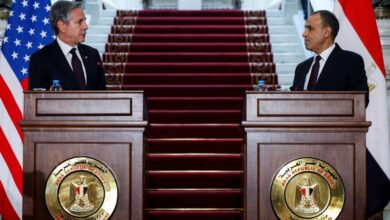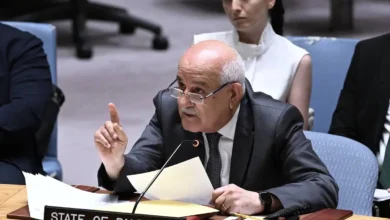AI-generated image of Rafah sparks anger on Social Media with more than 40 Million shares

In the last 24 hours, a shocking Artificial Intelligence recreated picture of Gaza is trending on social media with forty million shares on Instagram. Notable personalities that have resorted to the circulation of the image include singer Kehlani, comedian Hasan Minhaj, and Bridgerton actor Nicola Coughlan, among millions of others.
The picture depicts rows of tents heading towards the distant snowy mountains with the middle tents spelling out ‘All eyes on Rafah. ’ This is taken in the background of the Rafah massacre, whereby Israeli forces attacked a camp of tents in Rafah, Gaza, which led to the death of at least 45 people, mainly women and children, and many seriously injured. The attack, where tents were burned and many horrendous pictures of mutilated dead bodies and cut-off limbs shown, has been criticised highly by political leaders and Palestine supporters.
The destruction of Rafah, which Israel said was a Hamas base, came hours after the International Court of Justice (ICJ) called for an end to operations. It has aggravated the other and pushed for more advocacy for foreign involvement.
To the massacre, the AI-generated image appeared on social media and quickly gained popularity. Indeed, it is still possible to find this image on the web, but the author of the picture is unknown; the photo was posted as a template on Instagram, making it easier for people to share and demonstrate their support for the cause. It was also posted on X (previously known as Twitter), gaining hundreds of thousands of re-shares and likes.
The viral image has prompted one kind of response from the netizens and another from those who have viewed the picture. Some people applaud its capacity to draw public attention to the suffering, while others accuse the drama of painting a glossy picture of the suffering Rafah. Some of the critics’ concerns are that the given image distorts some of the grounded realities where Palestinian journalists struggle to live in covering the continuous attacks.
Another said, “Palestinian journalists have been dying for months to report every single massacre, and people are reposting an oh-so-creative AI art that says ‘all eyes on Rafah’ and has no actual information about what is happening or any call to action. ”
For instance, one user asked why it is possible to use fake, clean images to attract attention when authentic and shocking images from Rafah can be used.
In the meantime, the image’s proponents claim that it manages to avoid social media’s algorithms that, more and more often, delete or obscure the content coming from Gaza. It gets foul when a user says, ‘The real reason that image was able to spread that quick is because the moderation system didn’t detect it’ “If they posted actual pictures, they would either get shadow-banned or reported for material that advocates violence. ”
Some also said that the AI image did not suffer from shadow banning and content censorship that posts supporting Palestine often experience with social media giants such as Meta.
The controversy reaches the level of an accusation of performing activism and identifying that those who share the image did not say a single word during the previous months filled with battles. ”Reposting the ‘All Eyes on Rafah’ template doesn’t exempt you from the last seven months you were silent,” one user said.
On the other hand, some people’s attitude is that any consciousness is good and that making it ‘hip’ to fight against what Israel is doing is good enough to create the movement. ”The AI ‘all eyes on Rafah’ post might feel ‘performative’ or frustrating, but honestly, Israel-Palestine is a war of public opinion and consensus; if it has become ‘trendy’ to stand against Israel’s massacre of Palestinians, then it is a net good,” one user contended.
The viral image, therefore, raises several questions about the continued manifestation of social media activism in light of Gaza and other current conflicts, primarily the use of generated content to support global humanitarian issues.




